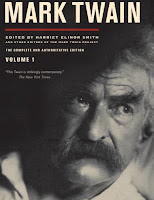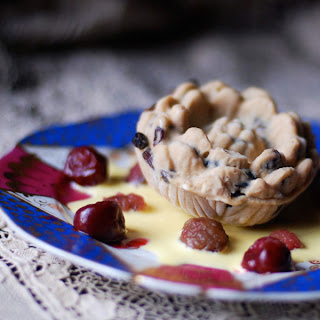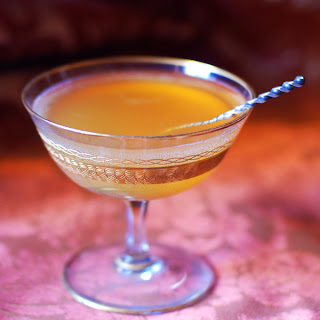Another reason to recreate a 1906 Mark Twain dinner to mark my anniversary was to celebrate his autobiography -- published this week, 100 years after his death, just as he had stipulated. How’s that for a good stunt (and it’s #5 on the Amazon list, not bad for someone celebrating his 165th birthday this year)!
Sassy, ornery and funny - it sticks pins in the rich and powerful in a way he felt would be best appreciated after the characters were long dead. Robert Hirst, curator of the Mark Twain papers said: “He liked to say nasty things-he’s really good at it-but he didn’t like the idea of being there when the person heard them and was hurt by them!” I can’t wait to read it. Dictated the last 4 years of his life, it is sure to be full of tales of many nights like this 1906 dinner at the Players.
Player’s Private Dining Room, 1905
.
Player’s Private Dining Room today
Twain attended many dinners at the Players. The lucky tradition of guests signing the menus puts Twain at quite a few, his ‘John Hancock’ prominent on each menu, including that of the Delmonico’s lunch that launched the Player’s Club in 1887. I’d like to think that this menu consisted of Twain’s favorite dishes since so much effort was spent organizing suitable quotations for the occasion.
You’d think they would be exhausted by the time they got to the punch, but the dinners were as much about fellowship and conversation as they were about food… and don’t forget the alcohol! There would have been wonderful wines to go with the food and every good men’s club of that era kept a well stocked cellar.
Taking my cue from a list that Ranhofer compiled in The Epicurean , the caviar and oysters would have seen Sauternes, Barzac ( a slightly drier Sauterne) and Montrachets. The turtle soup would have had a Madeira or sherry. The frog’s legs would probably have seen a Rhine wine and sweetbreads Moulin-á-vent, Macon or Clos de Vougeot. The squab would be paired with a Medoc or St Emilion or St Julien. The dessert would probably be taken with champagne --Pommery, Cliquot, Perrier Jouet, Moet and Mum. It’s fascinating that so many of the brands we have today were around then! With coffee the Otard cognac of course - as the menu specified, followed by cordials and beer at the end!
The Epicurean
I was curious how a modern wine professional would feel about this list so I asked my friend, Dan Perrelli at The Wine Hotel in L.A. He responded:
“Written records of 19th century food and wine pairings often surprise with recognizable names, yet confuse the modern palate in their seemingly kaleidoscopic nature. There are two points to remember. One, the very nature of the named libation has likely changed in the intervening century. Two, lists like this were prepared for diners possessing a deep love and knowledge of wine and food; they are artifacts of an era's highest culture.
The challenge is to compose a harmonious progression from the proffered wines. Completely dependent on each dish's flavors, I can't hazard a guess. I will say that the most expansive, iconoclastic choice here is the sweetbreads: wines based on Gamay, Chardonnay, or Pinot Noir. I guess covering the Burgundy waterfront is the ideology.”
Dan continued, “My friend, Chef Octavio Becerra, introduced me to the felicitous practice of the evening-ending beer. Calms the stomach.” So beer to finish isn’t as peculiar a nightcap as I had thought!
But wait, there are 2 more dishes left to share with you, and squab is next up on the menu. I never knew that the word ‘squab’ could be a sofa or a way to “fall heavily plump and fat,” words have taken strange turns, haven’t they? For our purposes, a squab is a young pigeon that is dispatched just as its feathers are starting to come in and therefore is less darkly flavored than the adult version. Then as now, squab was a fancy dish for a well-heeled audience.
I decided since I had 2 beautiful little D’Artagnan squabs to play with, I would try them 2 ways, split and fried and roasted whole to see which I preferred. I used 2 different sauces as well – one tangy with tarragon vinegar and the other sweet and rich with port and currant jelly. Both are excellent and would work with duck admirably. Remember, like its grown-up version, squab does not like being over-cooked… it turns liverish… go for medium for best results. Squab aren't large as the Twain quote noted
"It is as sweet an outfit as ever I saw, what there is of it." Too true, but as Spencer Tracy once observed "what's there is choice" (actually, he said cherse, in his inimitable tough guy way).
"It is as sweet an outfit as ever I saw, what there is of it." Too true, but as Spencer Tracy once observed "what's there is choice" (actually, he said cherse, in his inimitable tough guy way).
Squabs with Tarragon
2 D'Artagnan squabs, split in half
S&P
2 oz butter
1 t flour
1/2 cup reduced stock*
1 T tarragon vinegar (I put tarragon in ww vinegar a few days before)
1T Madeira
Sauté the squabs in butter till cooked and brown, about 12 minutes (do not overcook, it will make the meat taste liverish... go for medium!). Pour off half the butter (if the butter has gotten too brown, toss it and add 2 T fresh butter) and add the flour. Pour in the stock, madeira and the vinegar and adjust the seasoning. Plate and pour sauce over the squabs and serve.
Roasted Squab with Currant Port Wine Sauce
carrot sticks (optional)
¼ cup currant jelly
¼ c port
3 T demiglace
S&P to taste
Warm the jelly and add the port and demiglace. Reduce till slightly thickened and glaze the bird.Brush the sauce on the bird after it's cooked and serve the rest of the sauce on the side.
The last dish on the Twain menu is Nesselrode Pudding. This is my 3rd effort making this and I think my most successful. I cooked the chestnuts in their sugar bath till the sugar caramelized a little and that made for a sublimely decadent flavor and texture. Soaking the fruit in maraschino didn’t hurt either… it cuts through the luxurious ice cream in a lovely way.
What I discovered making lemon ice months ago was too much sugar means ice will not freeze completely. This is why the original recipe calls for soaking the raisins and currants in syrup so they will not be hard frozen nuggets in the cream. Using alcohol accomplishes the same thing. Having the maraschino-marinated sour cherries as a foil to the sweetness finishes the dish perfectly.
And what’s the history of this killer ice cream dessert? Who was Nesselrode?
Nesselrode Pudding was invented by the king of chefs, Antonin Carême (1784-1833) in 1814 and named for the Russian diplomat Count Karl von Nesselrode (1780- 1862) who was astonishingly multicultural for his time. Born aboard a Russian ship in port in Portugal, educated in Berlin and a Naval aide-de-camp to Tsar Paul at the age of 16, he went on to guide world politics as a statesman for the Holy Alliance (even intervening in territorial issues between the US and Russia over the “Oregon Country” boundaries in 1824) and one of the richest men in Europe thanks to his reward from a grateful French government for his successful negotiations to reduce the penalties imposed on France after Waterloo.
Ivan Day of Historical Food, felt that the pudding was originally molded to look like the classic English boiled puddings as a visual joke since it would be cold and light instead of warm and heavy. I wrote about the dessert and the wonderful Maraschino liqueur that gives it punch in my first post HERE.
It seems appropriate to have this at the end of a great dinner… and it will make you smile with pleasure when you dip your spoon into the sinful chestnut cream and boozy custard as Mr. Twain must have done. The quote used for the dish was:" His motto was, 'Meat first and spoon vittles to top off on.' " You can definitely be topped off with this!
Nesselrode Pudding based on Jules Gouffé ‘s 1874 recipe
1 7 oz package cooked chestnuts from D’Artagnan
¾ c sugar
1/3 c water
1 c heavy cream
1 cup milk
2 egg yolks, beaten
1 t vanilla
1 oz raisins
1 oz currants
1/3 c whipped cream
Nesselrode Sauce
1 egg yolk
1 t sugar
½ c cream
12 marrons glacés *
12 frozen sour cherries marinated in 2 T maraschino liqueur
Put currents and raisins in a bowl with the maraschino liqueur and let sit... overnight is best.
Take the chestnuts, sugar and water and put in a saucepan on low heat for 10 – 15 minutes until sugar thickens and caramelizes slightly. Let cool to lukewarm and puree with the cream and milk then strain. Put in a saucepan with egg yolks and bring to 160º over low heat. Remove, add vanilla and strain again and cool.
Take the chestnuts, sugar and water and put in a saucepan on low heat for 10 – 15 minutes until sugar thickens and caramelizes slightly. Let cool to lukewarm and puree with the cream and milk then strain. Put in a saucepan with egg yolks and bring to 160º over low heat. Remove, add vanilla and strain again and cool.
When it has cooled, prepare in you ice cream maker and at the end put in the fruit and marinade. Freeze in 1 large or individual molds. This makes 4 small, very very rich servings!
While the ice cream is freezing, prepare the sauce.
Stir sugar together with egg and add cream. Put over a low frame, stirring constantly until thickened add the maraschino. Refrigerate.
Plate ice cream, drizzle sauce on plate and place cherries and marrons glacés around plate. ~~~Word to the wise… CHILL the plate and don’t walk away from the mold… it will droop (see the photo below)!
*To make them, take some cooked and peeled chestnuts and put in sugar syrup for 5-10 minutes over a low flame. Drain them and set aside.
Next, the menu quotes Twain:
”That Otard if you please. Never take an inferior liquor, gentlemen, not in the evening in this climate. That’s the stuff, My respects!” Evidently Twain thought highly enough of the cognac to ask for it by name. There are reasons for this allegiance beginning with a fine long pedigree.
The Otard family came from the Viking Ottar who arrived in Scotland to burn and pillage 1200 years ago and ended up staying, collecting a title and building a Castle – DunnOttar -- built between the 13th and 17th centuries (but an early dark ages fortress would have been there before the existing ruins).
The Ottars followed the Stuart cause with James II to France in 1688 (and their lovely castle was pulled down for scrap as a punishment for their politics) and were made Barons Otard in 1701 by a grateful French king.
They bought the 1000-year old Chateau de Cognac in 1763 and founded a cognac firm in 1795 after return from exile during the revolution (his neighbors released the Baron from certain death and he escaped to England). Their product is still considered one of the premier examples of cognac and an Otard still owns the business, making it one of the oldest family-owned companies in the world.
The quote, “Westward the Jug of Empire makes its way” marks the closing of the dinner, with whisky. We know this was a favorite beverage of Mr Twain and the line is an allusion to Twain’s “Life on the Mississippi” wherein he relays his theory of whisky’s role in the advance of civilization:
“How solemn and beautiful is the thought that the earliest pioneer of civilization, the van-leader of civilization, is never the steamboat, never the railroad, never the newspaper, never the Sabbath-school, never the missionary -- but always whiskey! …But whiskey, you see, was the van-leader in this beneficent work. It always is. It was like a foreigner -- and excusable in a foreigner -- to be ignorant of this great truth, and wander off into astronomy to borrow a symbol. But if he had been conversant with the facts, he would have said: Westward the Jug of Empire takes its way.”
- Life on the Mississippi
And so dinner draws to its conclusion: “They continued to fetch and pour until I was well soaked and thoroughly comfortable.” Twain would have retired downstairs to play billiards with the other gentlemen in his party… smoking his cigars and perhaps walking the few blocks home in the chill winter air.
Heck of a party, heck of a year… and so, to you all, thanks for all of your support for lost past remembered.
Do please enjoy this wonderful drink, Sparkling Champagne Cider, based on 1869’s Cooling Cups and Dainty Drinks. I toast you all!
Sparkling Cider for 2 based on an 1869 Recipe
½ c good cider
½ c sparkling wine
2 t orange flower water
½ drop Neroli or Bergamot essence from Aftelier
Pour all into glasses and serve. The neroli perfumes your mouth in a divine way!
Thanks to Gollum for hosting Foodie Friday
























0 comments:
Post a Comment